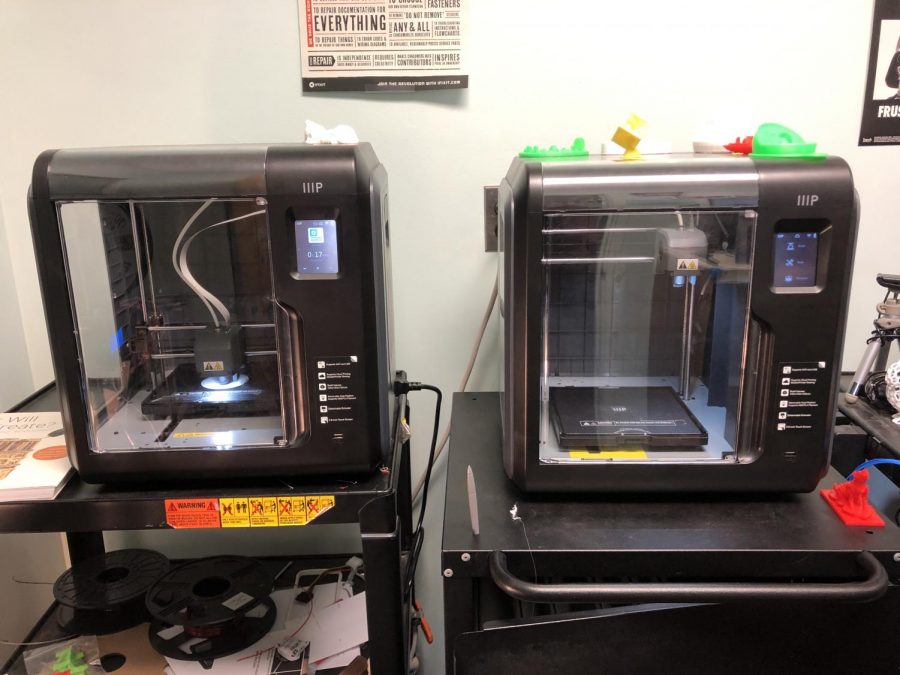MacDuffie’s New 3D Printers
The two Monoprice MP Voxel printers in the IT Department. The left printer is in the process of printing an item. Photo courtesy of Mohammad Abbasi.
October 10, 2019
This past summer The MacDuffie School obtained two new 3D Printers by Monoprice using a grant from GE Additive. This included features that improve the ease of use and quality of the printers making more opportunities available for students.
The Monoprice MP Voxel printers bring many new possibilities. The printers are equipped with a built-in camera that can be used for monitoring prints when Director of Information Technology Edward Gray or IT Specialist Andrew Perkins are not nearby. This is an improvement next to the custom camera and stand Gray and Perkins built for the previous printers.
According to Gray, the printers can maintain consistent temperatures with their enclosed cases which improves the plastic’s adhesion to the surface of the print bed. The new printers can also connect to WiFi, which allows prints to be initiated wirelessly by a computer in the IT Department. The size of the print beds and cases of the new printers are also noticeably larger than the previous printers.
Interested in the rewards involved, MacDuffie applied to the GE Additive Education Program which provides a grant to purchase 3D printers. It also provides a free extra plastic filament and software programs for schools involved in STEM teaching. When MacDuffie was selected, GE Additive gave one 3D Printer for free and offered a 50% discount on a second printer, which Gray said was a deal of “very good value.”
With these additional printers, there will be “a quicker turnaround time on projects” and at the same time, they will have “better quality.” The extra software from GE Additive known as Polar 3D Cloud allows someone “to upload models and then put in cues to the printers…so the workflow [can be managed] better.” Gray hopes that these features will encourage teachers to incorporate 3D printers with more projects in their classrooms.
Gray and Perkins were influenced to buy new printers when they saw that “3D printers were available for the education market, they were being more affordable, [and] more prevalent.” Gray also said that they provided a way for students to get exposure to STEM related concepts such as engineering and prototyping. In the past, classes like Biology and BC Calculus have used 3D printers in their projects to do things such as model plant and animal cells.
If the “demand increases or if [the school adds] a 3D design print class,” then the school would consider getting more printers. As of now, Gray believes that they “are in a good spot,” as the school currently has a total of four 3D printers available for use by teachers and students.
